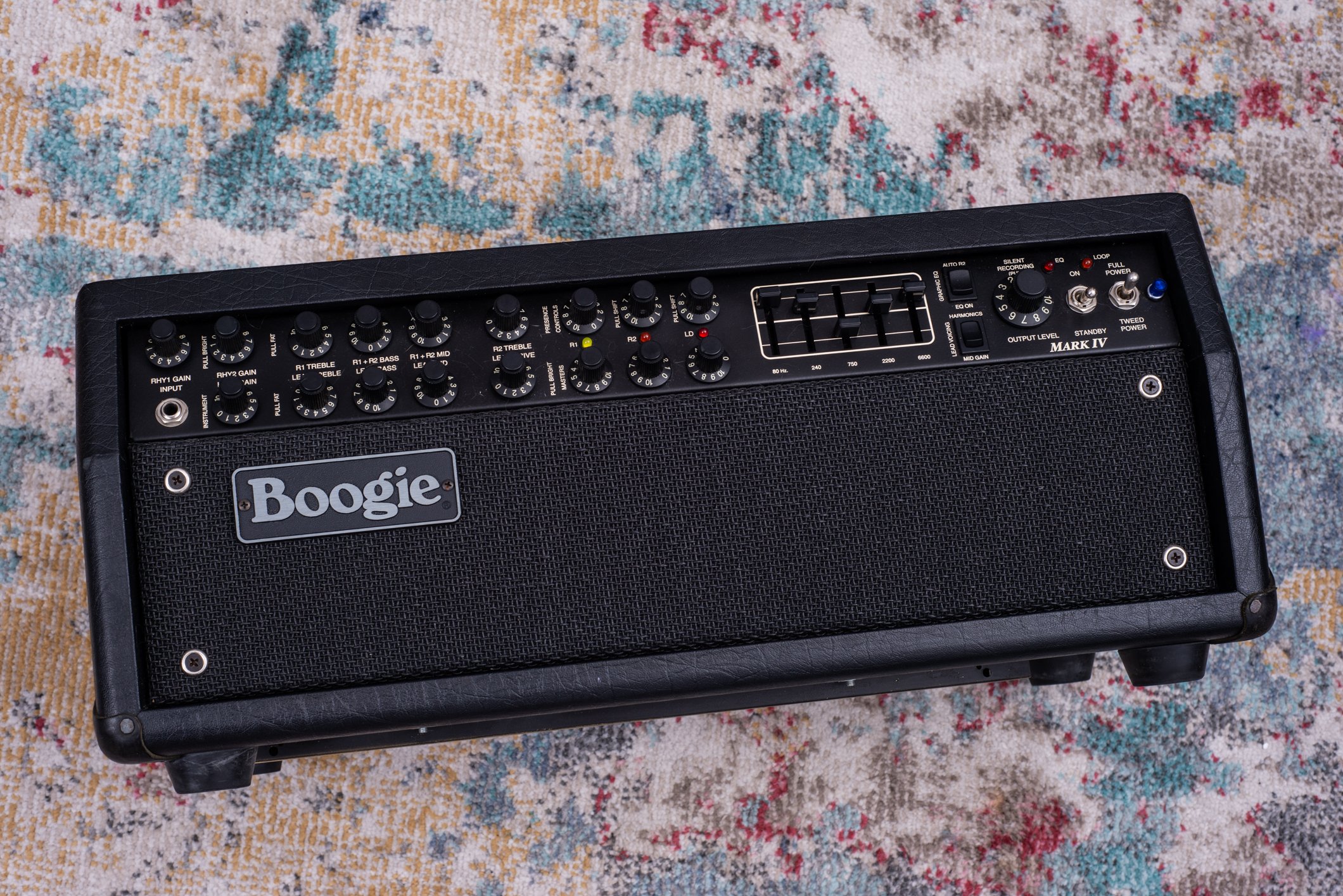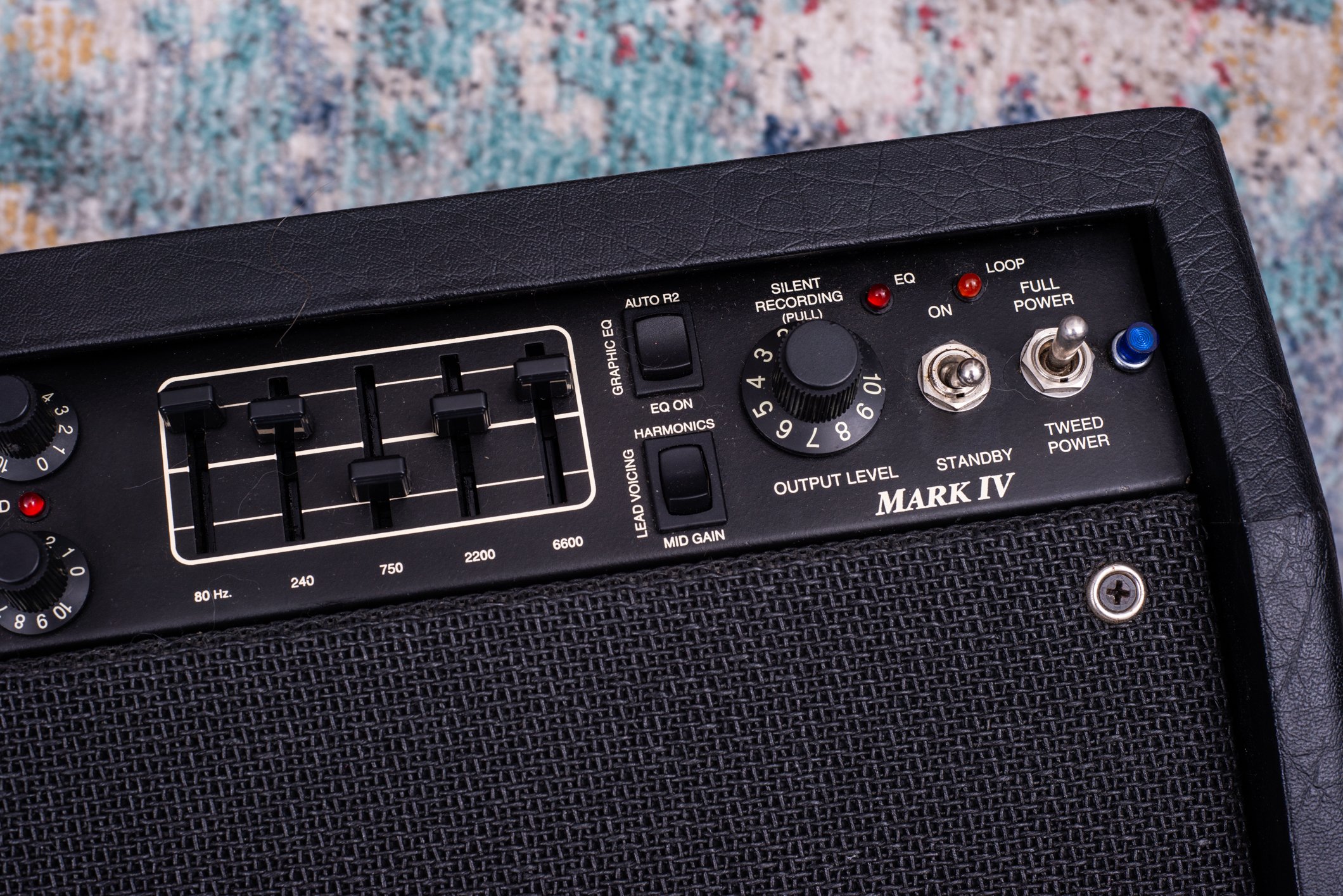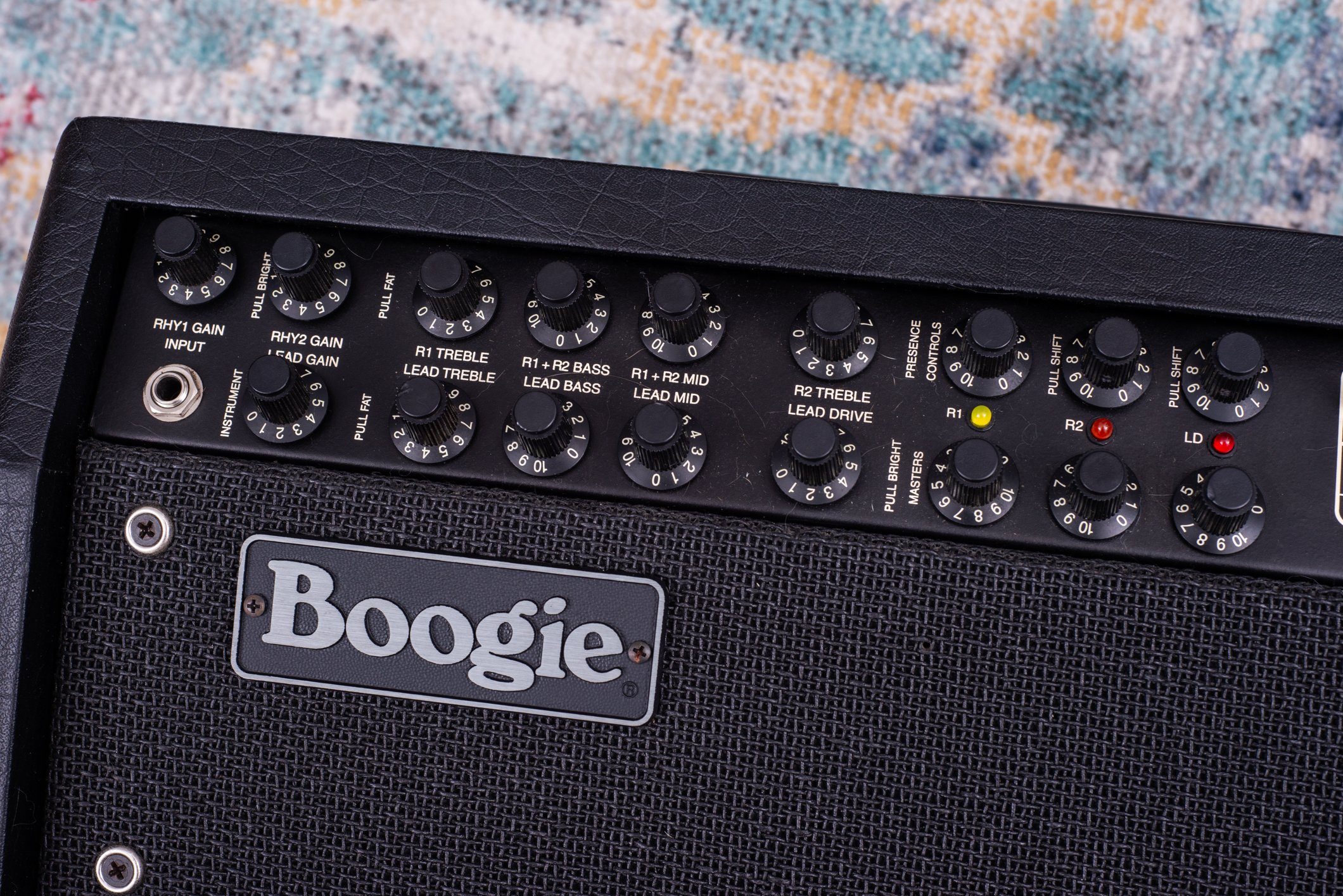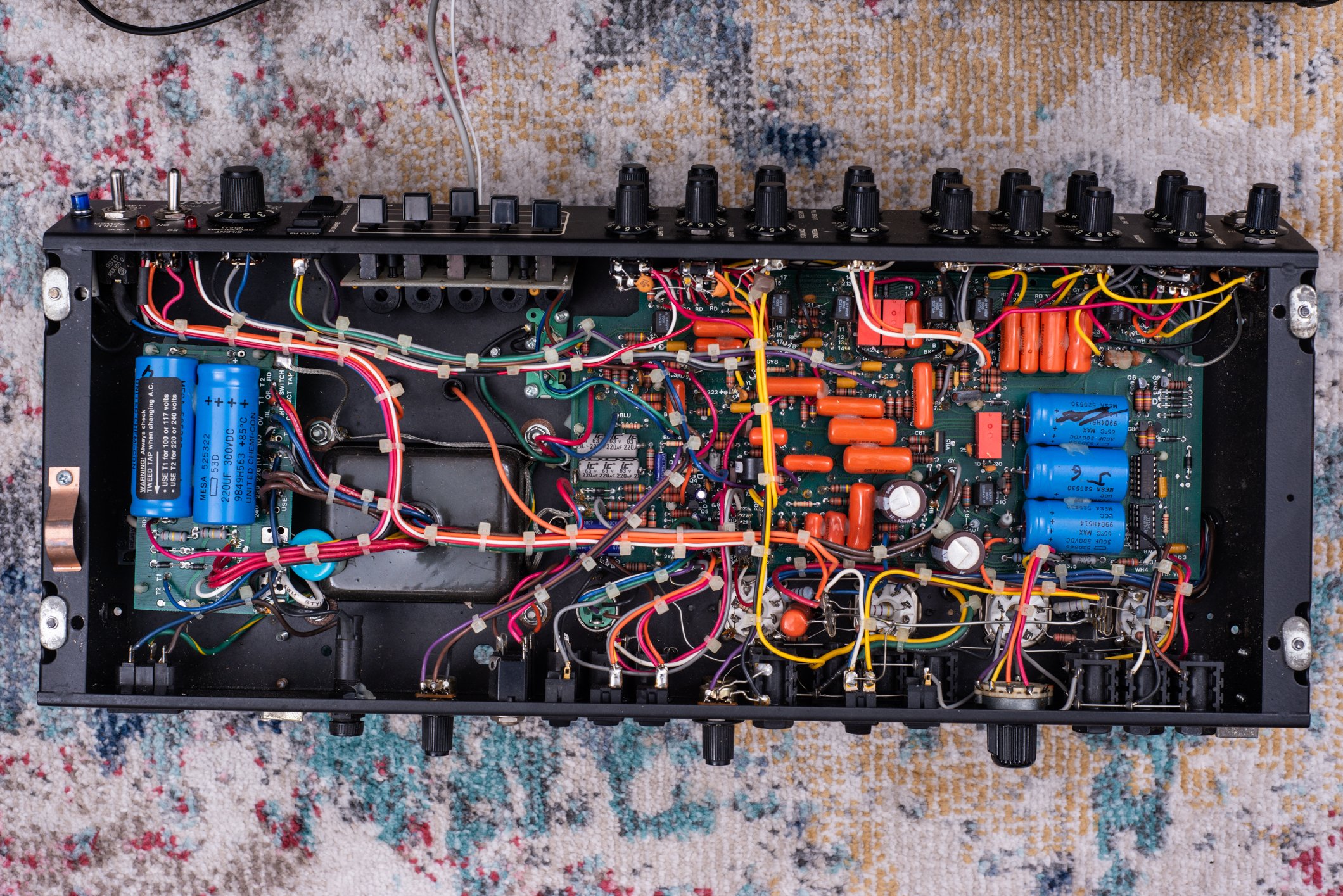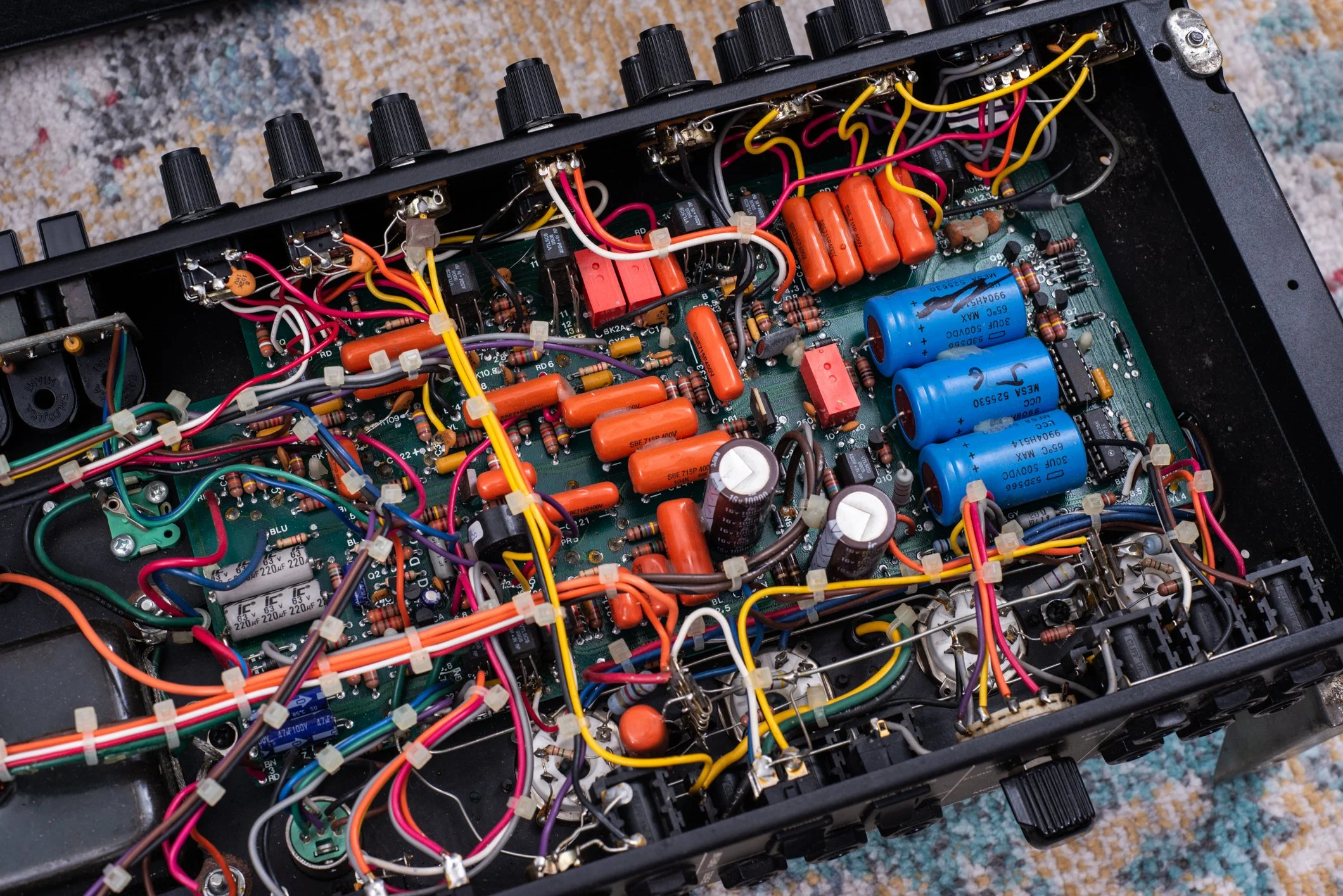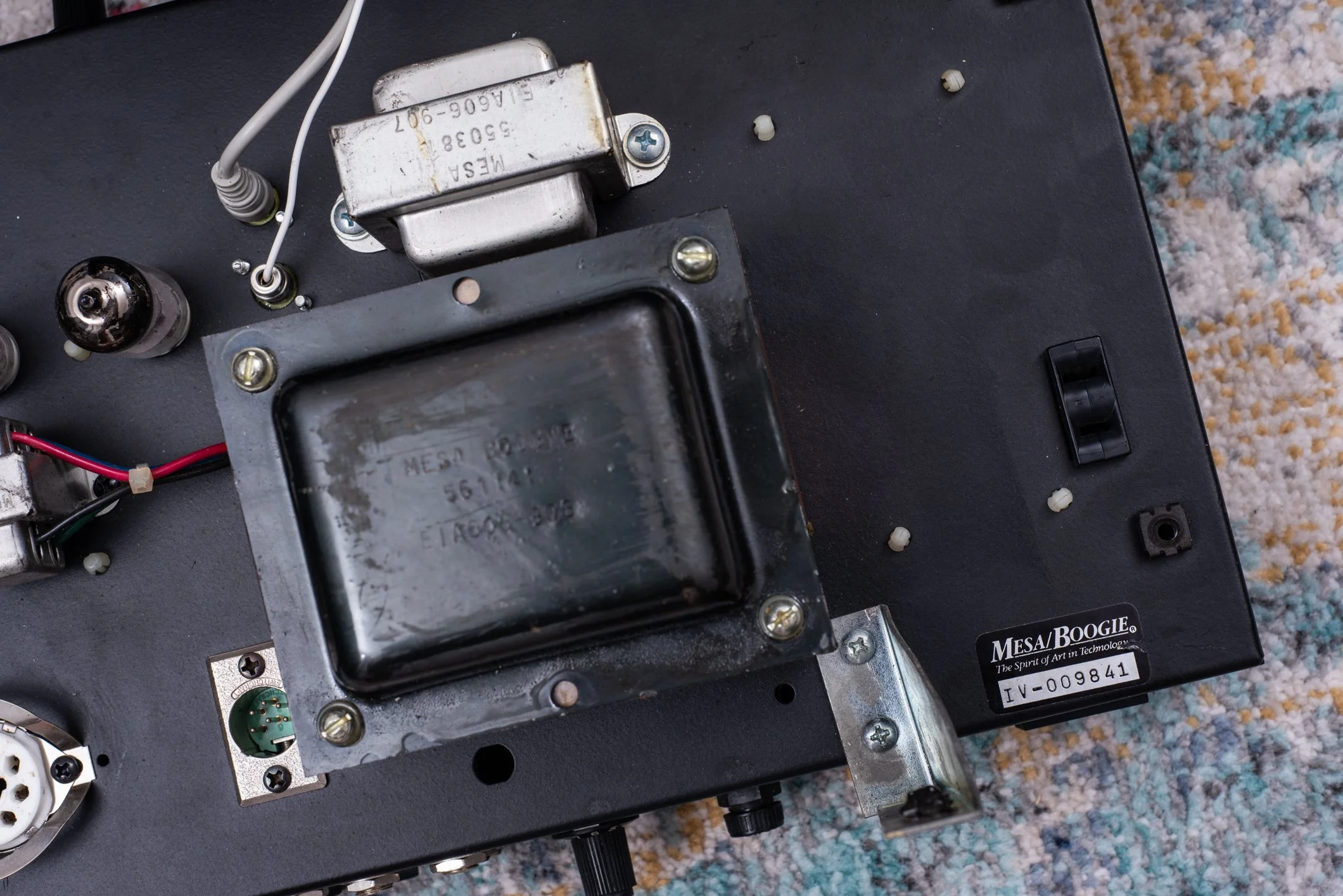1999 Mesa/Boogie Mark IV Medium Head
Specs
3 Channels
85w Output
“B” revision circuit
4x 6L6 Power Tubes
5x 12AX7 Preamp tubes
Accutronics spring reverb
Overview
I purchased this amp after selling off my original Mk IV head. At the time I thought the Mark V I had just acquired could do it all and figured I didn’t need a IV anymore - boy was I wrong!
This amp is in top condition and it’s my favorite Mark for sure. It has just a little something extra in the lead channel that I can’t replicate with the Mark V, and I also like being able to adjust the lead gain and drive controls separately (the Mark V has a fixed drive control). I also like the RHY2 channel on this amp, especially with the presence contour pulled out, which does a really great spanky crunch tone quite unlike a traditional Marshall or Orange style crunch, with more hair.
These amps have a somewhat different circuit topology than most other high gain amps, which makes them difficult to really replicate. Most amps follow a path of gain stages, usually 3 or 4, then either a plate driven or cathode follower tone stack, then off to the output stage. This amp is quite different - the signal goes into the gain and treble/middle/bass tone stack almost immediately, then through the gain stages, and in the case of the Lead channel, and additional pair of tube gain stages on their own circuit with a gain control (“Lead Drive”), before reaching the output section. What makes this so interesting is that the EQ has a far more drastic effect on the tone, and the amount of gain you get is directly related to the treble control - it’s not uncommon to run the treble control at or near maximum value for the trademark “Mark” metal rhythm tone. Bass and mid frequencies can then be reintroduced with the graphic EQ section, which lies further in the circuit, more like a traditional EQ design, but the Graphic EQ on these Mark’s is Active. This means that the GEQ can actually boost frequencies, instead of just reducing them like a passive EQ can. This means you can bring in a huge amount of punchy bass without any of the clarity issues you might have when restricted to a passive EQ. This might bother some of the all-tube purists, but it’s hard to argue with the results of an amp like this.
